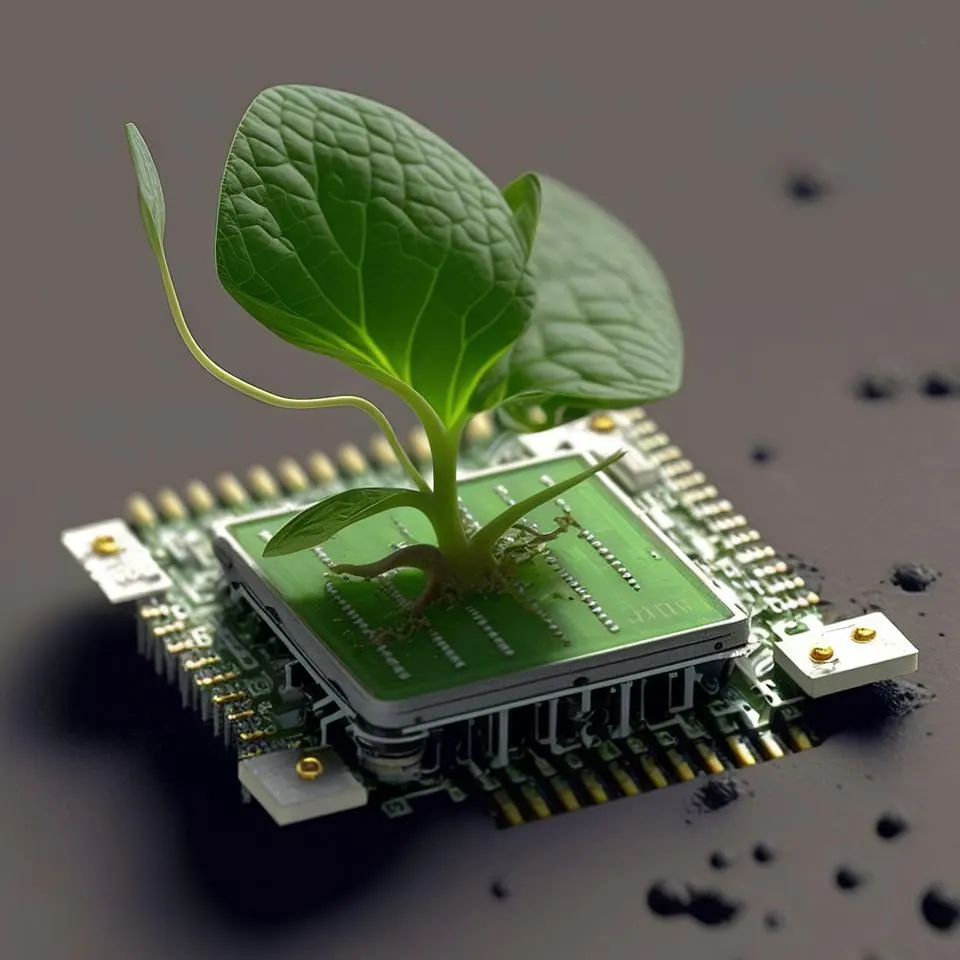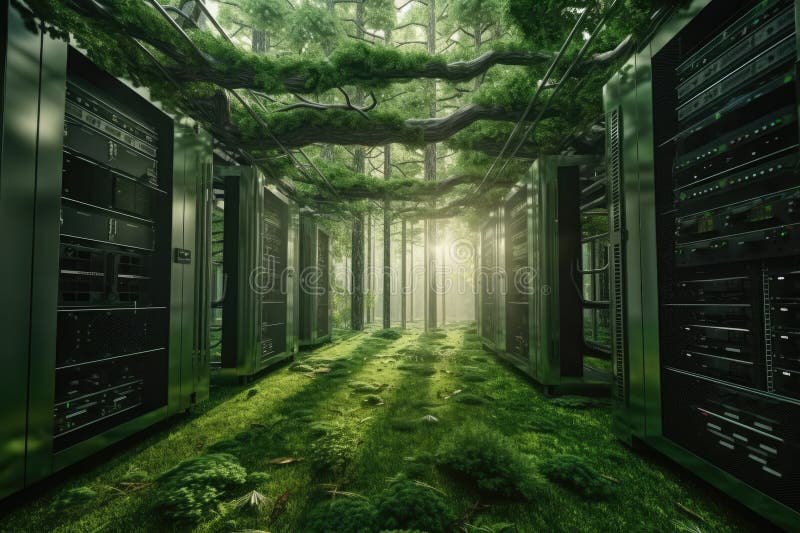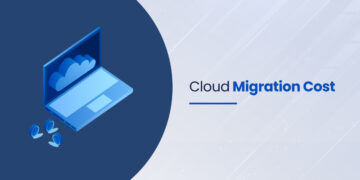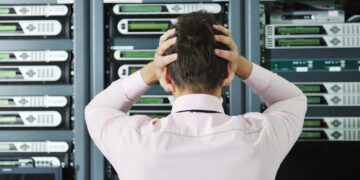In the digital age, data is the new currency, and the engines powering this economy are massive, energy-hungry server farms. These ubiquitous digital warehouses, vital for everything from streaming movies to running complex AI models, consume staggering amounts of electricity, contributing significantly to global carbon emissions. However, a quiet revolution is underway: the emergence of sustainable servers and green data center technologies. For businesses, environmental advocates, and consumers alike, understanding this shift is crucial. It’s not just about reducing a carbon footprint; it’s about innovating for efficiency, cutting operational costs, and building a more resilient, environmentally responsible digital infrastructure. This pivotal trend in green tech offers a powerful narrative for high-value content, driving both SEO and strong Google AdSense engagement. This comprehensive article will delve deep into the imperative for sustainable servers, explore the cutting-edge strategies and technologies making them a reality, and examine the profound impact this movement has on the future of our planet and the digital economy.
The Environmental Imperative for Greener Data Centers
The sheer scale of energy consumption by data centers is immense and growing. These facilities often operate 24/7, requiring constant power for computing, cooling, and ancillary systems. While exact figures vary, it’s estimated that data centers collectively account for 1-3% of global electricity consumption, with projections suggesting this could rise dramatically as digital demand continues to surge. This energy demand directly translates into significant greenhouse gas emissions, especially when powered by fossil fuels.
The environmental concerns extend beyond just electricity:
- Water Consumption: Many data centers use vast quantities of water for cooling, often drawing from local supplies and contributing to water scarcity issues in certain regions.
- Electronic Waste (E-Waste): The rapid refresh cycle of server hardware generates substantial amounts of electronic waste, much of which contains hazardous materials that can pollute soil and water if not properly managed.
- Land Use: Large data center complexes require significant land area, sometimes displacing natural habitats or agricultural land.
The conventional model of data center operation is unsustainable in the long term. A shift towards sustainable servers and green data center practices is no longer a luxury but a fundamental necessity for environmental stewardship, corporate responsibility, and long-term economic viability. Forward-thinking organizations recognize that embracing green tech can lead to significant cost savings through reduced energy bills, enhanced brand reputation, and compliance with increasingly stringent environmental regulations.
Pillars of Sustainable Server and Data Center Design
Achieving true sustainability in data centers requires a multifaceted approach, addressing every aspect of their operation from construction to disposal. Several core pillars guide the design and implementation of sustainable servers and infrastructure.
A. Energy Efficiency: Reducing the Power Footprint
At the heart of sustainable data centers lies the relentless pursuit of energy efficiency. This involves optimizing every component to minimize power consumption.
- High-Efficiency Hardware:
- Energy-Efficient Processors: Utilizing CPUs and GPUs designed for lower power consumption, especially newer generations that deliver more performance per watt.
- Solid-State Drives (SSDs): SSDs consume significantly less power than traditional hard disk drives (HDDs) for data storage and access.
- Optimized Power Supplies: Using highly efficient power supply units (PSUs) in servers and infrastructure, minimizing energy loss during power conversion.
- Modular and Scalable Designs: Designing servers and racks that can be easily expanded or contracted to match current demand, avoiding over-provisioning and wasted energy.
- Advanced Cooling Techniques: Cooling is often the largest energy consumer after the servers themselves. Innovative approaches are crucial.
- Hot/Cold Aisle Containment: Physically separating hot exhaust air from cold intake air within the data center, preventing mixing and increasing cooling efficiency.
- Free Cooling/Economizers: Utilizing outside air or naturally cool water sources to cool data centers, reducing reliance on energy-intensive chillers. This is particularly effective in cooler climates.
- Liquid Cooling: Directly cooling server components with non-conductive liquids. This is far more efficient than air cooling, especially for high-density racks. Options include direct-to-chip cooling, immersion cooling (submerging servers in dielectric fluid), and rear-door heat exchangers.
- Evaporative Cooling: Using the evaporation of water to cool air, often requiring less energy than traditional compressor-based cooling systems.
- Power Usage Effectiveness (PUE) Optimization: PUE is a critical metric, indicating how efficiently a data center uses energy. A PUE of 1.0 means all energy goes to IT equipment; anything above indicates energy lost to cooling, power delivery, etc.
- Regular Audits and Monitoring: Continuously tracking energy consumption at various points within the data center to identify inefficiencies.
- Software-Defined Power: Using intelligent software to manage and optimize power distribution based on real-time demand.
- Server Virtualization: Running multiple virtual servers on a single physical server, significantly reducing the number of physical machines needed and thus energy consumption.
B. Renewable Energy Integration: Powering with Purpose
Shifting away from fossil fuels to renewable energy sources is a cornerstone of sustainable servers.
- On-Site Renewable Generation: Installing solar panels (photovoltaic arrays) or small wind turbines directly at the data center location to generate clean electricity.
- Off-Site Renewable Energy Procurement: Purchasing renewable energy credits (RECs) or entering into power purchase agreements (PPAs) with renewable energy providers (solar farms, wind farms) to offset conventional electricity consumption.
- Grid Integration and Smart Grids: Working with local utilities to integrate data centers into smart grids, potentially allowing them to draw power when renewable generation is high and even return power to the grid during low demand, contributing to grid stability.
- Battery Storage and Microgrids: Implementing advanced battery storage solutions (e.g., lithium-ion) to store excess renewable energy or provide backup power, reducing reliance on diesel generators. Microgrids allow data centers to operate independently or semi-independently from the main grid using renewable sources.
C. Resource Efficiency: Water, Waste, and Materials
Beyond energy, sustainable data centers meticulously manage all resources.
- Water Conservation:
- Closed-Loop Cooling Systems: Reusing water for cooling instead of constantly drawing fresh water and discharging wastewater.
- Water Recycling: Treating and reusing wastewater from cooling processes.
- Air-Side Economizers: Utilizing outside air for cooling, significantly reducing water consumption compared to water-based cooling.
- Water-Efficient Landscaping: For surrounding grounds, minimizing water usage.
- E-Waste Reduction and Recycling:
- Extended Hardware Lifecycles: Utilizing servers for longer periods before replacement, reducing the frequency of e-waste generation.
- Refurbishment and Reuse: Refurbishing old hardware for secondary markets or internal non-critical applications.
- Responsible Recycling: Partnering with certified recyclers to ensure proper disposal and recovery of precious metals and components, preventing hazardous materials from entering landfills.
- Design for Disassembly: Manufacturers designing servers that are easier to disassemble and recycle at end-of-life.
- Sustainable Building Materials:
- Recycled and Locally Sourced Materials: Using building materials with recycled content and sourcing them locally to reduce transportation emissions.
- Low-Impact Construction: Employing construction practices that minimize environmental disturbance.
- Green Building Certifications: Aiming for certifications like LEED (Leadership in Energy and Environmental Design) for sustainable construction.
D. Location Optimization: The Climate Advantage
The geographic location of a data center plays a significant role in its sustainability.
- Cool Climates: Locating data centers in naturally cool regions allows for greater use of free cooling, drastically reducing energy required for chillers.
- Proximity to Renewable Energy Sources: Building near abundant geothermal, hydro, wind, or solar resources can facilitate easier and cheaper access to clean power.
- Access to Recycled Water/Wastewater: Proximity to sources of treated wastewater can reduce reliance on potable water for cooling.
Disruptive Technologies Driving Green Data Centers

The acceleration of sustainable servers and green data centers is not solely an ethical choice; it’s increasingly enabled by cutting-edge technologies that make greener operations both feasible and economically attractive.
A. Artificial Intelligence (AI) and Machine Learning (ML) for Optimization
AI and ML are revolutionizing data center management by bringing unprecedented levels of efficiency.
- Predictive Cooling: AI algorithms analyze real-time data (temperature, humidity, server load) to predict cooling needs and adjust HVAC systems proactively, avoiding over-cooling and saving energy. Google famously used AI to reduce cooling energy by 40% in its data centers.
- Workload Management: AI can intelligently distribute workloads across servers to optimize resource utilization, ensuring servers are neither idle (wasting power) nor overloaded (requiring excessive cooling).
- Anomaly Detection: AI can identify unusual power consumption patterns or equipment malfunctions that indicate inefficiencies or potential failures, allowing for proactive maintenance.
- Energy Trading Optimization: AI can help data centers strategically buy power when renewable energy on the grid is abundant and cheap, and even sell excess power back to the grid.
B. Edge Computing and Decentralization
Moving computation closer to the data source or user can reduce the energy required for data transmission over long distances.
- Reduced Transmission Energy: Less data travel means less energy consumed by network infrastructure.
- Localized Cooling Opportunities: Smaller edge data centers might have more diverse cooling options tailored to their specific environment.
- Optimized Resource Use: Processing data locally for immediate needs can reduce the load on large, centralized data centers.
C. Carbon Capture and Reuse Technologies
While nascent for data centers, research is exploring ways to capture and potentially reuse CO2 emissions.
- Direct Air Capture: Technologies that pull CO2 directly from the atmosphere.
- Carbon Utilization: Exploring ways to convert captured CO2 into useful products like fuels or building materials. While still largely theoretical for data centers, this represents a long-term aspiration.
D. Advanced Monitoring and Analytics Platforms
Sophisticated software platforms provide real-time visibility into every aspect of data center operations.
- DCIM (Data Center Infrastructure Management) Systems: Comprehensive software suites that monitor power, cooling, environmental conditions, and IT assets, providing insights for optimization.
- Energy Dashboards: Visualizing energy consumption data in real-time, allowing operators to quickly identify inefficiencies.
- Environmental Sensors: Deploying networks of sensors to collect granular data on temperature, humidity, airflow, and power usage at the rack and server level.
E. Immersive Computing and Virtualization Advancements
Continued advancements in virtualization and containerization technologies allow for even more efficient use of server hardware, reducing the need for physical machines.
- Containerization (e.g., Docker, Kubernetes): Lightweight alternatives to virtual machines that allow applications to run in isolated environments on shared infrastructure with minimal overhead.
- Serverless Computing: Cloud models where the cloud provider dynamically manages server allocation, abstracting away the underlying infrastructure and optimizing resource use.
The Business Case and Broader Impact of Green Data Centers
The transition to sustainable servers and data centers is not merely an environmental crusade; it presents a compelling business case and offers significant broader impacts.
A. Cost Savings
The most immediate and tangible benefit is substantial reduction in operational costs.
- Lower Energy Bills: Reduced power consumption directly translates to lower electricity expenditures, which can be a significant portion of a data center’s operating budget.
- Reduced Cooling Expenses: More efficient cooling systems dramatically cut down on associated energy costs.
- Tax Incentives and Rebates: Governments and utilities often offer tax breaks, grants, or rebates for adopting energy-efficient and renewable energy technologies.
- Lower E-Waste Disposal Costs: Extending hardware lifecycles and effective recycling can reduce waste management expenses.
B. Enhanced Brand Reputation and Customer Loyalty
Consumers and businesses are increasingly prioritizing sustainability.
- Green Marketing Advantage: Companies that visibly commit to sustainable IT infrastructure can attract environmentally conscious customers and partners.
- ESG (Environmental, Social, and Governance) Compliance: Meeting ESG criteria is becoming critical for investors and can improve a company’s standing in financial markets.
- Talent Attraction: Employees, especially younger generations, are drawn to companies with strong sustainability initiatives.
C. Regulatory Compliance and Risk Mitigation
Governments worldwide are implementing stricter environmental regulations.
- Avoiding Penalties: Proactive adoption of green practices helps companies avoid fines and penalties for non-compliance.
- Future-Proofing Operations: Investing in sustainable technologies now prepares companies for anticipated future regulations.
- Supply Chain Resilience: A focus on sustainable sourcing and operations can build a more resilient and ethical supply chain.
D. Contribution to Climate Goals
Ultimately, the shift to sustainable servers plays a vital role in global efforts to combat climate change.
- Reduced Carbon Emissions: Directly lowers the carbon footprint of the digital economy.
- Model for Other Industries: Data centers, as significant energy consumers, can serve as a powerful example for other heavy industries to adopt sustainable practices.
- Innovation Catalyst: The drive for green data centers fosters innovation in energy efficiency, renewable energy integration, and waste management, with benefits spilling over into other sectors.
Challenges and Overcoming Hurdles

Despite the clear advantages, the path to a fully green digital infrastructure is not without its challenges.
A. Upfront Investment
Implementing new cooling systems, renewable energy infrastructure, or upgrading to more efficient hardware often requires significant initial capital investment. This can be a barrier for smaller companies or those with limited budgets.
B. Legacy Infrastructure
Many existing data centers were built without sustainability as a primary concern. Retrofitting these facilities with modern green technologies can be complex, costly, and disruptive to operations.
C. Geographic Limitations
Not all locations are ideal for free cooling or direct access to abundant renewable energy sources. This can limit the feasibility of certain green strategies.
D. Complexity of Integration
Integrating diverse renewable energy sources, advanced cooling systems, and AI-powered management platforms into existing complex IT environments can be technically challenging.
E. Data Center Reliability Demands
Maintaining the highest levels of uptime and reliability is paramount for data centers. Implementing new, unproven sustainable technologies must not compromise this critical operational requirement.
Overcoming these challenges requires strategic planning, collaborative partnerships, government incentives, and a long-term commitment to sustainability as a core business value. The rapid pace of innovation in green tech is continually providing more cost-effective and efficient solutions.
Powering the Digital Future Responsibly
The era of unchecked energy consumption by digital infrastructure is rapidly drawing to a close. The imperative for sustainable servers and green data centers is no longer a distant ideal but a pressing reality, driven by environmental urgency, economic viability, and evolving consumer and regulatory demands. From pioneering energy efficiency in hardware and cooling to embracing renewable energy sources and leveraging the power of AI, the industry is undergoing a profound transformation. This shift represents a commitment to building a digital future that is not only powerful and efficient but also environmentally responsible. For businesses, adopting these green tech strategies is a powerful differentiator, a pathway to significant cost savings, and a crucial contribution to global climate goals. As the digital world continues to expand, the success of our connected future will increasingly hinge on our ability to power it sustainably, ensuring that innovation and ecological stewardship advance hand in hand. The journey towards truly green data centers is a testament to human ingenuity—a vital step in harmonizing our digital ambitions with the health of our planet, making this a pivotal subject for widespread online engagement and insight.











